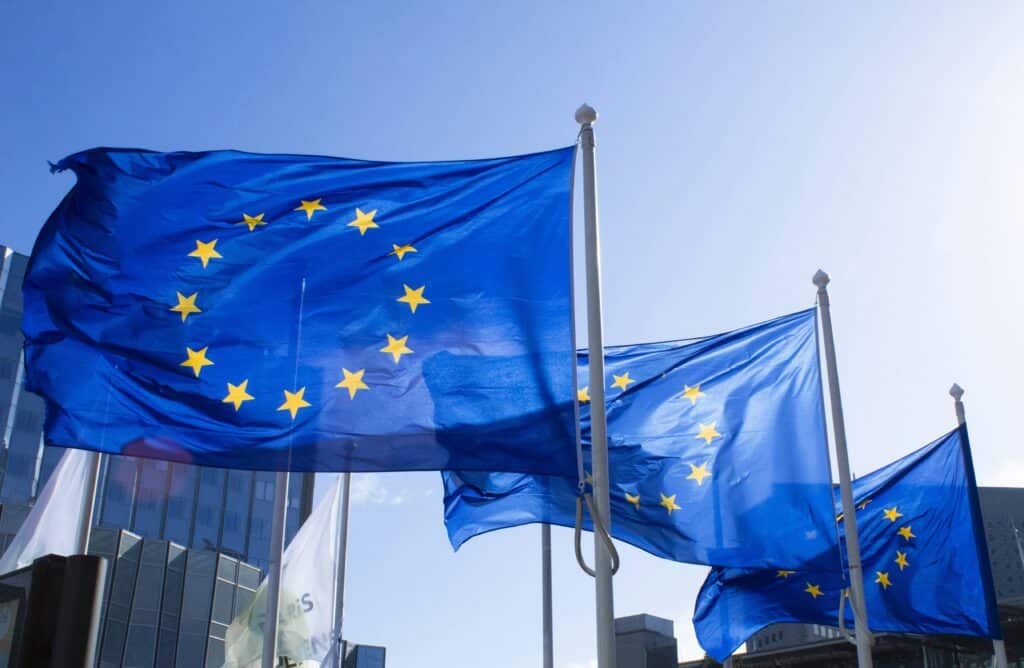The EU Hydrogen and Decarbonised Gas Market Package
An inside look into the recently adopted Gas Package
On May 21, 2024, the European Council adopted the final version of the ‘Hydrogen and Decarbonised Gas Market Package’ (gas package). The new package updates the rules for gas network and market operation, aligning the gaseous energy sector with the wider aims of the EU Green Deal and Climate Law.
The following article highlights some key changes, covering (i) network governance, (ii) the market and ‘renewable’ vs ‘low-carbon’ hydrogen, (iii) consumers, and (iv) security of supply. Finally, I will briefly recap the objectives of the package and reflect on its potential effectiveness based on this early assessment.
For an interview with Kitti Nyitrai and Ilaria Conti on the contents of the gas package, as well as articles on hydrogen, methane emissions, and wider reading on related subjects, see the list of links at the bottom of this article.
Background
This gas package is the fourth iteration of comprehensive legislation in the sector, following most recently the so-called ‘Third Energy Package’ of 2009. The two components of the package are an update of the Regulation on ‘the internal markets for renewable gas, natural gas and hydrogen’[1] (Gas Regulation), and an update of the Directive on ‘common rules for the internal markets for renewable gas, natural gas and hydrogen’[2] (Gas Directive).
The first proposal for recasting these two documents was published by the European Commission in December 2021. Since then, the package has been revised following the EU ‘ordinary’ legislative procedure, it will no longer be modified and is just pending publication in the Official Journal of the European Union. The Gas Regulation will become applicable six months after its publication, whilst Member States will have two years to adapt their national legislation to the provisions of the Gas Directive.
The overall aim of the updates is to make the regulatory framework fit for purpose for a future gaseous energy mix that includes less and less fossil (natural) gas and a growing share of renewable and low carbon gases with various origins and properties. Specifically, this means;
- establishing the conditions for facilitating the rapid and sustained uptake of renewable and low-carbon gases,
- improving market conditions and increasing the engagement of gas consumers,
- better accounting for contemporary security of supply concerns,
- addressing price and supply concerns at the level of the Union,
- recalibrating the structure and composition of regulatory bodies.
Network
In terms of the overall management, coordination, and planning of the network there are three key developments. Firstly, an entity for European Distribution System Operators (DSOs) will be set up per Articles 52 to 57 of Regulation 2019/943. Full details on the scope and role of the entity can be found in Articles 39, 40, and 41 of the Gas Regulation, but it is worth noting that participation is mandatory for distribution network operators for natural gas, with voluntary participation for hydrogen distribution network operators.
Secondly, a network association will be established for hydrogen transmission network operators, ‘The European Network for Network Operators of Hydrogen’ (ENNOH) (Article 57, Gas Regulation). The tasks of ENNOH include writing relevant network codes, in some cases in cooperation with the European Network for Transmission System Operators for Gas (ENTSOG), as well as developing union-wide, non-binding ten-year network development plans (TYNDPs) for the hydrogen sector, full details can be found in Articles 59 and 60. The ENNOH shall consist of hydrogen transmission network operators certified pursuant to Article 71 of the Gas Directive, with a final list of members, draft statutes, and draft rules of procedure to be submitted to ACER[3] and the European Commission by 1 September 2024. Until ENNOH is established in 2027, ENTSOG will be responsible for the development of Union-wide network development plans for gas and hydrogen networks (Article 61, Gas Regulation). Thirdly, hydrogen interconnection projects will now be eligible to apply for funding if they fall within the scope of the wider TYNDPs of ENTSOG, provided they are not already covered under the Important Projects of Common European Interest (IPCEIs) (Article 59, Gas Directive).
Ownership and access to an EU-wide hydrogen network (once established) was one of the key areas of debate in the stakeholder consultation period before the release of the package. In short, the majority of the rules governing the existing natural gas network will remain relatively unchanged for decarbonised gases and also carry over for hydrogen networks. This is true as concerns ownership unbundling of transmission network operators (TSO) (Arts. 68-70 – Gas Directive) and separation of the regulated asset base (RAB) (Article 5 – Gas Regulation), as well as Third Party Access (TPA) to the natural gas and hydrogen grids, including storage and terminals (Arts. 6 – Gas Regulation and 35-38 – Gas Directive).
Nevertheless, as per Article 5(3) of the Gas Regulation, Member States may allow inter-temporal cost allocation for hydrogen network investments, to ensure future users contribute to the the initial network development costs. If this is not deemed sufficient to cover the cost of investment, there is scope for financial transfer across regulated services, i.e. cross-subsidisation from the natural gas or electricity networks to the hydrogen network (Article 5(4). These exemptions are all subject to approval from the relevant National Regulatory Authority (NRA).
According to Articles 35 and 37 of the Gas Directive, Member States may also decide not to grant TPA to their hydrogen networks until 31 December 2032. This is one of several temporary exemptions to the recast Gas Directive aimed at trying to encourage the development of the network and associated hydrogen market. For example, hydrogen transmission operators are exempt from unbundling rules (Article 68 – Gas Directive) for the first two years after entry into force of the Directive. Other temporary exemptions for existing and geographically confined hydrogen networks include to articles 48, 51, and 52 of the Gas Directive. These exemptions cover things such as tariffs, access to terminals and storage, as well as unbundling obligations[4].
Market and ‘renewable’ vs ‘low-carbon’
The European Union’s position on renewable vs low-carbon gases has been long debated due to its pertinence for incentives, disincentives, and phase-in/out timelines. The recast Renewable Energy Directive EU (RED) (2023/2413) and its Delegated Acts have gone a long way towards defining and classifying these gases, but the set of definitions is still to be finalised. The gas package is another meaningful step towards completing the picture.
The revised Gas Directive preamble (13) asserts that “Renewable hydrogen is the most compatible with the Union’s climate neutrality and zero pollution goal in the long term and the most coherent with an integrated energy system.”. However, given the limited availability of renewable hydrogen in the near term “Low-carbon fuels such as low-carbon hydrogen may play a role in the energy transition in line with the Unions’ climate targets, particularly in the short and medium term to rapidly reduce emissions of existing fuels, and support the transition of the Union’s customers in hard-to-decarbonise sectors in which more energy or cost-efficient options are not available.” In this sense the position of the EU is clear. Low carbon fuels are there to avoid emissions where immediately practicable and efficient in the short term, but they are not consistent with the long-term vision for the EU’s economy and energy system. I interpret ‘short and medium term’ to be no later than 2050.
The same preamble details the importance of including methane emissions, carbon dioxide capture rates, and wider upstream emissions in the lifecycle analysis (LCA) of the emission profiles of low carbon fuels. The global warming effect of hydrogen is also acknowledged (15) although not defined. There is a definition of ‘low-carbon hydrogen’ and ‘low-carbon gases’ more widely in Articles 2 and 9 of the Gas Directive, which establishes a greenhouse gas emission reduction threshold of 70% versus a fossil fuel comparator, defined at 94 g CO2 /MJ under the RED. The methodology for calculating the emission intensity will be delivered within 12 months of the Gas Directive entering into force (Article 9(5)) in the form of a Delegated Act to the RED. As per Article 2 of the Gas Directive, ‘renewable hydrogen’ and ‘renewable gases’ in general[5] are not defined through a new criteria or threshold, but again in reference to the RED and its Delegated Acts.
Broadly speaking, the treatment of low carbon fuels relative to renewable gases within the Gas Directive and the Regulation reflects the vision outlined in the preamble. For example, low-carbon gases will receive a 75% discount from various entry and exit tariffs, whilst renewable gases receive a 100% discount, as per Article 18 of the Gas Regulation. Moreover, for the first year after entry into force of the Regulation, tariffs will not be chargeable against the transmission of renewable gases across interconnection points between Member States, with a 75% discount for low carbon gases (Article 18(4)). To qualify for an exemption on charges, a “sustainability certificate” must be provided in line with Articles 29 and 30 of the RED.
Finally, in an effort to facilitate the use of the existing natural gas network in the transmission of hydrogen, blends of 2% hydrogen volume into natural gas flows must be accepted and facilitated at cross-border points (Article 21, Gas Regulation). Adjacent transmission systems are free to set local thresholds higher than this if they wish to. Nevertheless, in the preamble (74) of the Regulation, it is noted that this hydrogen blending should be considered a ‘last resort’ use case, again reflecting its scarcity and therefore the importance of using it in a targeted way.
There is a 2049 sunset date set for the conclusion of long-term supply contracts (Article 31, Gas Directive), although no specific targets or details on the phase-out of unabated fossil gas are mentioned. In terms of support measures for decarbonised gases, there is no stipulation of a mandatory offtake for industry (demand side) or a direct financing mechanism (supply side), these can be found in the RED and Innovation Fund ‘European Hydrogen Bank’ (EHB) auctions respectively.
Consumers
In the lead-up to this new legislation, it was widely felt that consumer provisions in the gas sector were lagging behind the electricity sector – where they have been more recently bolstered through the Clean Energy Package (CEP). The European Commission has been undertaking extensive consultation on this area in preparation for the Gas Package, including through the Citizens Energy Forum and its associated working groups, amongst which the FSR is a member.
The Gas Directive makes regular references to improving consumer provisions. Articles 3 and 4 on ‘General rules for the organisation of the market’ stipulate that all customers are free to purchase natural gas and hydrogen from a supplier of their choice. Member States also have the freedom to make ‘public interventions’ in the pricing of these products for vulnerable consumers or those suffering from energy poverty (Article 4(3)). Moreover, the entire third chapter is dedicated to consumer empowerment (Articles 11-29). Amongst these articles and the provisions therein, I pick out a few noteworthy developments:
- Article 12 – Switching: The time required to switch a customer between suppliers should be no longer than three weeks, and less than 24 hours by 1 January 2026. No switching fees for small businesses and households.
- Article 14 – Comparison tools: Member States should ensure access to free comparison tools for households, microenterprises, and small enterprises with an expected yearly consumption of below 100,000 kWh.
- Article 15 – Active customers: The sale of renewable energy by active consumers (prosumers) should be facilitated.
- Article 16 – Billing information: Free provision of bills in either paper or electronic form and stipulations on the information required (see Annex I), including emissions, cost comparisons, and information to facilitate switching.
- Articles 17/18 – Smart meters for natural gas and hydrogen: The deployment of smart meters for natural gas and hydrogen shall be ensured and facilitated by Member States following a cost-benefit analysis for each (see Annex II).
- Article 29 – Supplier of last resort: Member States must establish a ‘supplier of last resort’ regime or take equivalent measures to ensure continuity of supply at least for household customers. Many energy suppliers were bankrupted during the energy crisis of 2021-2022, leaving households without suppliers in some cases. This measure should help to ensure that there is always a default backup supplier in the event of severe disruptions in the market.
Security and price volatility
The revised EU Regulation on security of gas supply (2017/1938) already makes provisions on areas such as solidarity provisions in the event of supply disruptions, the previous Gas Regulation did not explicitly cover security. However, the recast Gas Regulation extends the scope of the security of supply regulation to cover renewable and low-carbon gases, as well as introducing additional provisions on key areas, such as cybersecurity and supply disruptions. Insulating against these problems is a concern not only for the long-term decarbonisation of the sector but also for competitiveness and security, two of the other fundamental principles of EU energy policy as laid out in the Energy Union.
The Commission offers voluntary measures that can be taken by Member States on the basis of the common risk assessment and subject to consultation with relevant risk groups to protect against supply risks. Options include imposing minimum storage obligations, introducing incentives for gas storage bookings, and integrating storage into the transmission system of network operators (Article 7b – 2017/1938). Following its proposal by certain Member States, Article 42 of the Gas Regulation facilitates the option of joint procurement of strategic stocks of natural gas, although it is not mandatory. A similar mechanism is to be facilitated for the hydrogen sector, established under the EHB until the end of 2029 (Article 52). There are also various new measures to restrict and phase out the import of natural gas and hydrogen from Belarus and Russia (e.g. Articles 6, 8, 47, 48, 54 Gas Regulation)
As regards cybersecurity, the Gas Regulation amends Article 8a of Regulation 2017/1938 on security of supply, now mandating that cybersecurity is included as a threat in the preparation of Member States ‘preventive action plans’ (PAPs). The article also opens the door for a delegated act on gas-specific provisions for cybersecurity as regards cross-border gas flows. Nevertheless, broadly speaking the final versions of the gas package texts have been slimmed down as regards security of supply relative to the original 2021 proposals, given that other emergency legislation published at the height of the energy crisis now covers many of the relevant issues.
Did the package deliver on its ambitions?
At the outset of the analysis I outlined five broad aims of the package: i) establish the conditions for facilitating the rapid and sustained uptake of renewable and low carbon gases, (ii) improve market conditions and increase engagement of gas consumers, (iii) better account for contemporary security of supply concerns, (iv) address price and supply concerns at the level of the Union, (v) recalibrate the structure and composition of regulatory bodies.
These are ambitious and complex objectives, and in many regards, the EU is a first mover. There are no existing internal markets for hydrogen and decarbonised gases anywhere in the world, and the path to regulate a decarbonised gas sector has therefore also never been walked. It is difficult to say with any great degree of confidence exactly how that transition should be made, remaining within the boundaries of cost-effectiveness, as well as technological and resource constraints. Decarbonisation efforts are economy-wide and draw a range of resources (monetary and otherwise), often in competition.
Interpretations regarding the virtues of any given policy direction are of course dependent on the perspective of the reader, and the Commission will struggle to reconcile the numerous and divergent perspectives in the field of energy and climate policy. However, this gas package feels fit for purpose, with enough flexibility and space for revision and iteration to keep it up-to-date as the sector evolves over the next few years. Moreover, the drafting of the package from late 2021 to early 2024 has bridged an incredibly volatile period in the gas sector in Europe, making it extremely difficult to pitch the contents of the texts to the needs of the sector. Nevertheless, the package has evolved well to reflect that evolution, and the final versions contain very contemporary details, for example on security of supply and consumer protection.
The FSR contributed to the public consultation processes for the legislative initiatives in the Hydrogen and Decarbonised Gas Market package, as well as delivering research, advanced training, and facilitating policy dialogue on the energy transition and wider decarbonisation drive. Moving forward, FSR remains eager and committed to engaging in evidence-based policymaking that supports the EU’s energy, climate, and competitiveness ambitions.
Quick links
Gas package materials
- Gas Directive final version
- Gas Regulation final version
- Council press release
Wider reading
- Cover the Basics on ‘unbundling’
- Cover the Basics on hydrogen
- Cover the Basics on methane emissions
- Cover the Basics on gas security of supply
Audio visual
- Interview with Kitti Nyitrai and Ilaria Conti on the contents of the gas package
- What is renewable hydrogen?
[1] amending Regulations (EU) No 1227/2011, (EU) 2017/1938, (EU) 2019/942 and (EU) 2022/869 and Decision (EU) 2017/684 and repealing Regulation (EC) No 715/2009 (recast)
[2] amending Directive (EU) 2023/1791 and repealing Directive 2009/73/EC (recast)
[3] The Agency for the Cooperation of Energy Regulators (ACER).
[4] Although companies are advised to avoid ex-post harmonisation issues by establishing an initial structure that is vertically unbundled.
[5] Including biomethane and Renewable Fuels of Non-Biological Origin (RFNBOs).






